
Data-driven HR
Struggling to turn HR data into stories that impress leadership? Our content hub has the answers. 📈
Explore our content hubEverything To Know About HR Data Analytics
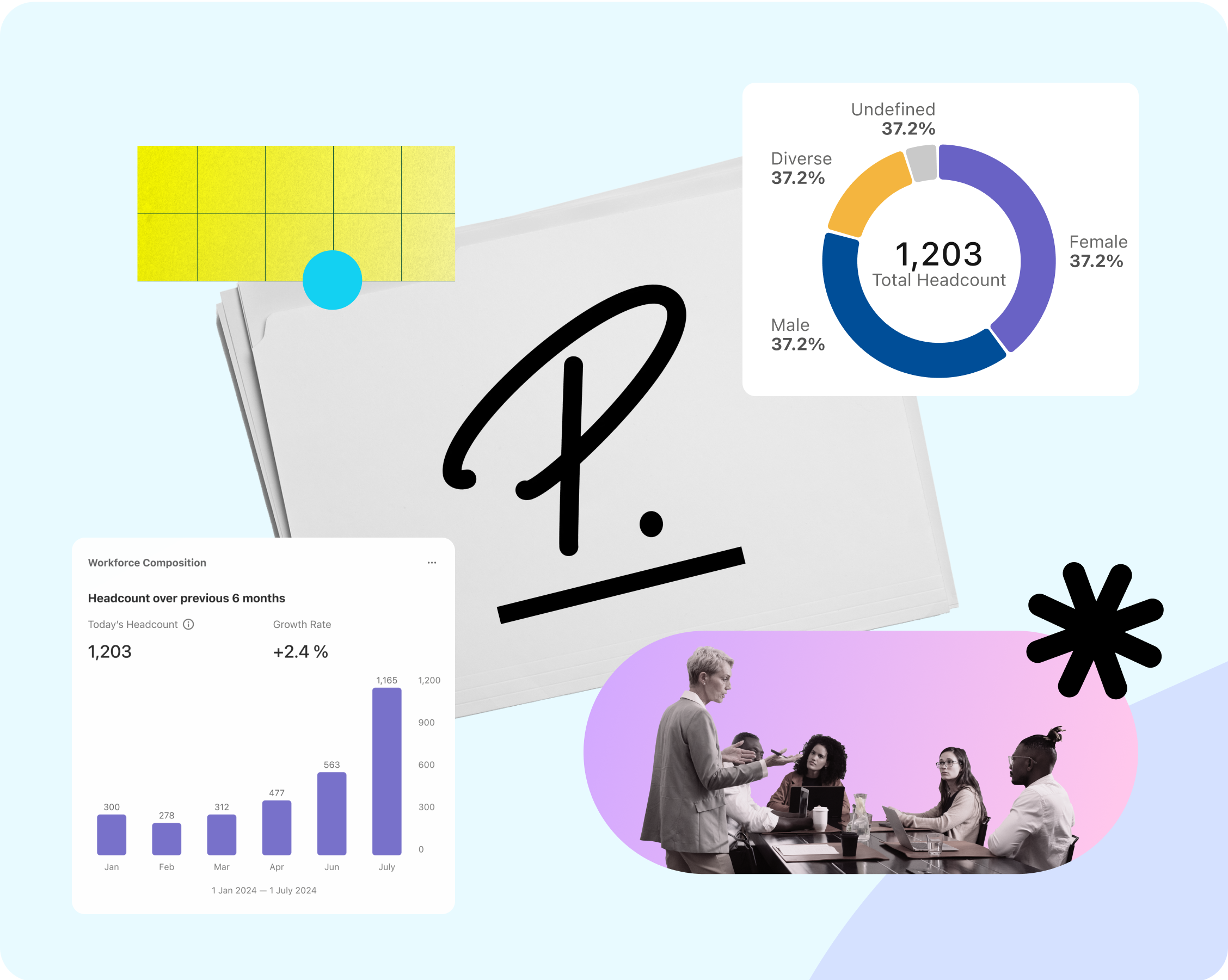
In this article, we will help you understand HR data analytics. Here, we’ll show you the positive ways it can influence your organisation and how to implement it within your current business strategy.
Download nowContents
- 1What is HR data analytics?
- 2Who is responsible for HR data analytics?
- 3How HR data analytics influences decisions
- 4How HR data analytics can assist HR teams
- 5The four levels of HR analytics
- 6Examples of HR analytics in action
- 7How to implement an HR analytics strategy
- 8Gain fast and precise analytics with Personio
What is HR data analytics?
The term HR data analytics, also called people analytics, refers to gathering data on your workforce based on predetermined HR metrics. This information can then be used to improve your organisation overall. For example, HR data analytics is commonly used to gain insight into metrics like employee engagement and retention. This can help you determine which policies most positively influence employees.
Who is responsible for HR data analytics?
Who handles HR data analytics can vary from organisation to organisation. Some companies have HR representatives solely focused on people analytics, while others divide their HR teams to analyse assigned sections of the workforce. Third-party analysts are also a commonly used option.
How HR data analytics influences decisions
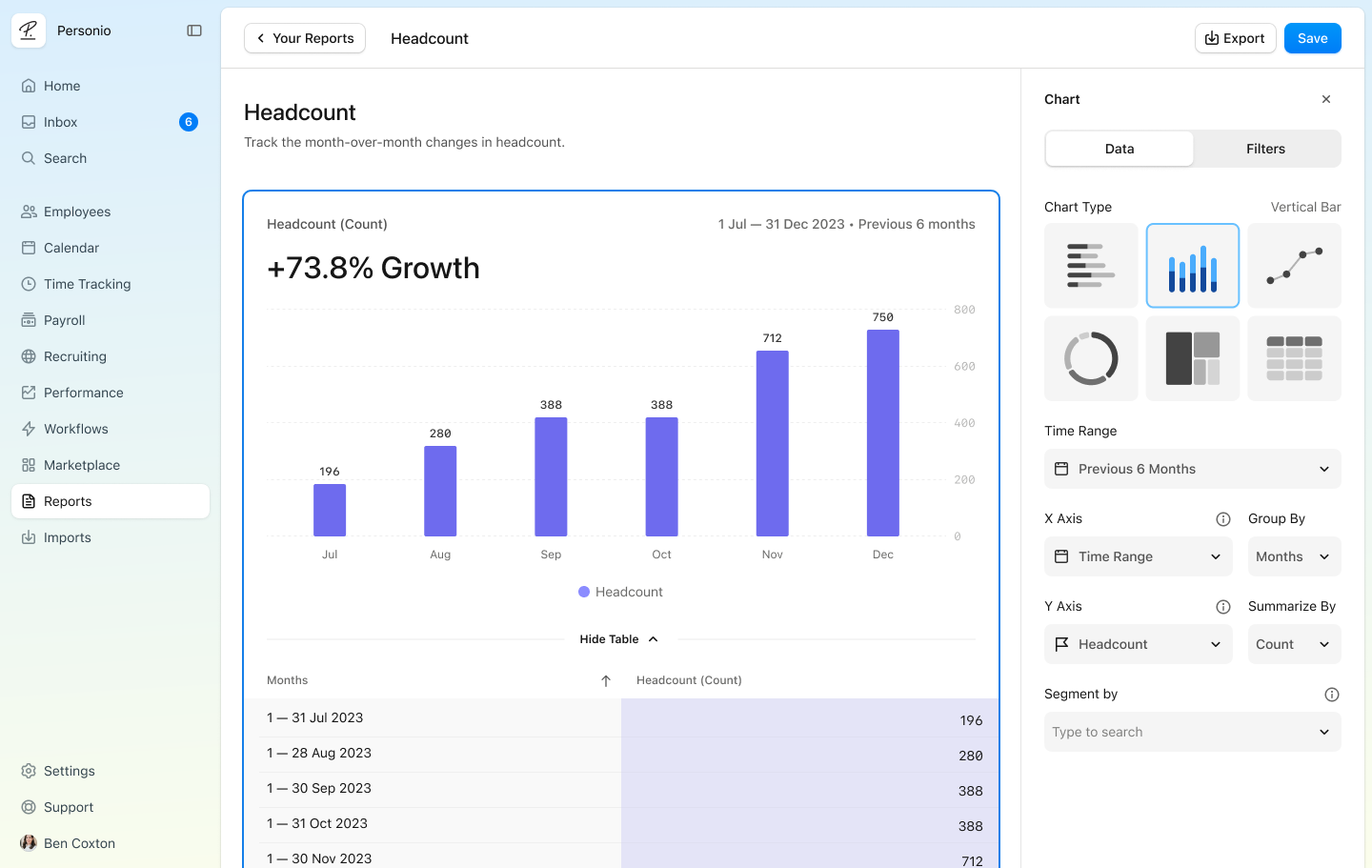
HR data analytics can influence your organisation from top to bottom, as long as you have the tools needed to correctly interpret the collected data. Below are just a few areas of your organisation that people analytics can affect:
Employee Recruitment and Onboarding
Your organisation can collect data on new employees and identify the methods, hiring channels and offerings that attract the highest-quality candidates. This analysis can also determine the actual cost of onboarding new hires, so you can better fit the process into your budget.
Payroll
Analytics can provide a wide-ranging overview of payroll expenses, overtime costs and other non-salary compensation that can help fine-tune what employees are paid across departments. You could change policies to better manage labour costs and equalise pay within your organisation using this anonymised information.
Benefits
An HR data analytics report can tell if the benefits you offer effectively meet employee needs. These results give you insight into what employees want in their benefits package. They also can reveal what you should consider including to improve employee satisfaction and retention rates and what you can safely cut from your benefits package.
Training and development
This data can show the success of initiatives used to invest in your employees, particularly professional development programmes and specialised training. You can use this information to offer these courses to more employees, expand what you offer or explore more effective options. Additionally, analysis can show where skill development is most needed in your organisation. You can attune your new training and development programmes to those needs.
Employee engagement
Data analytics for HR can also look at employee engagement throughout the company and identify what contributes to lower or higher levels, for example between departments. This information lets you fine-tune your company policies to engage as many of your employees as possible.
The People Manual: HR Analytics & KPIs
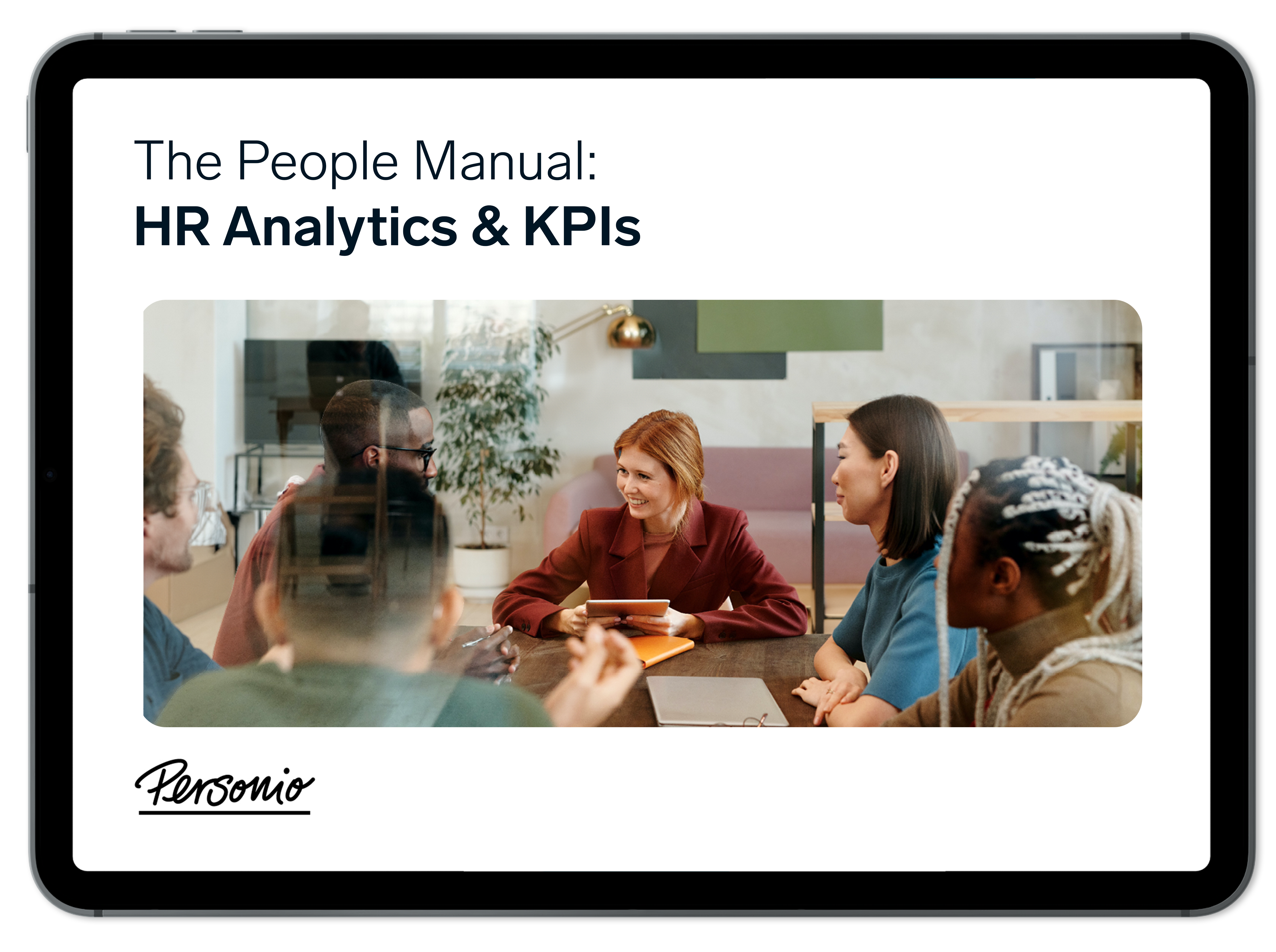
Over half a decade of collected insights on everything related to the KPIs that drive success in HR. Grab your free copy right now.
Download your copy todayHow HR data analytics can assist HR teams
While data analytics from HR helps the entire company, it also provides several benefits for an HR department specifically. The advantages of in-depth people analysis include:
Better Decision-Making: Having data from people analysis means it’s easier to make the right decisions for your HR strategy. This information can help assure you and your team that you’re making the right calls, using data as your guiding light.
Showcase Value to the Organisation: The data itself enhances HR’s value to an organisation. It does this by increasing the accuracy and effectiveness of the solutions that HR develops and deploys.
Make Better Arguments for Use of Resources: Data can help demonstrate the need for a new programme, revision of a current one or removal of a programme from your current offerings. This can be applied in many ways, including professional development or benefits.
The four levels of HR analytics
There are four levels of HR analytics. These are: descriptive, diagnostic, predictive and prescriptive.
1. Descriptive
This is a surface-level observation as to what’s going on within an organisation or a particular department. Descriptive analytics helps to build an initial case or give insight into a potential issue. It also helps to show how HR data analytics can help solve it.
2. Diagnostic
This particular level begins to dig into why an issue is occurring. The diagnostic level offers context and understandings as to why the observations that are made within the descriptive level are actually happening.
3. Predictive
As the name implies, this method makes an educated assumption that something may occur and takes steps to prevent it before it does. This is not as common as descriptive and diagnostic levels, but some organisations may prefer to adopt this model to stop issues before they start.
4. Prescriptive
This level develops and deploys a solution. The prescriptive approach is built upon descriptive, diagnostic and predictive levels. In the case of using HR data analytics, the collected information is used to identify, guide and implement the proposed solution.
Examples of HR analytics in action
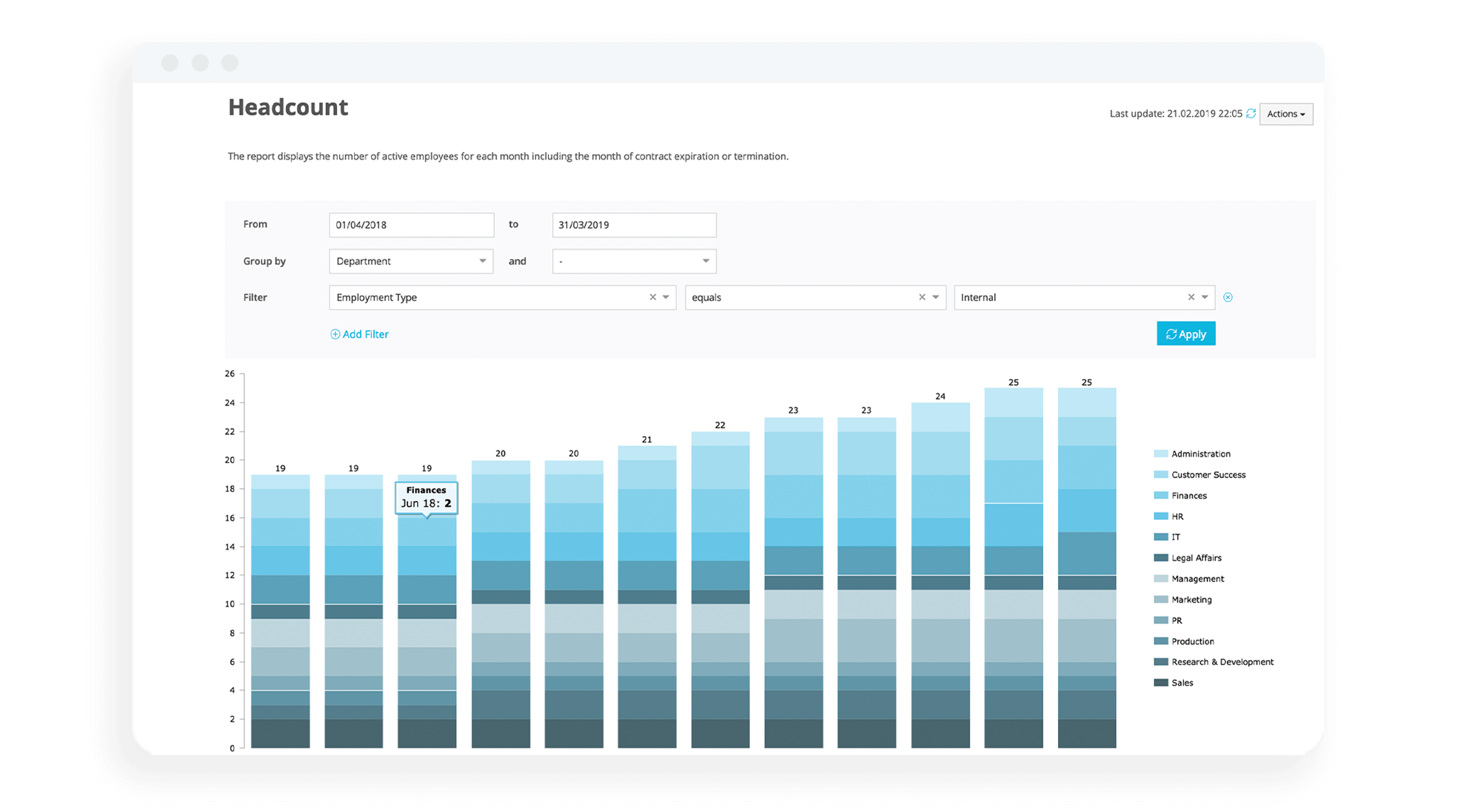
Below are a few examples of HR analytics in action to help demonstrate the benefits of this information in the workplace.
Example #1: Employee turnover
Company A has an employee turnover rate of about 20%, which they would like to lower to 15%. The HR team can use people analytics and information collected in exit interviews to identify the most common reasons why employees leave the company. The HR team can also use employee engagement data to pinpoint areas of employee dissatisfaction. With this information, they can make changes to help slow down turnover rate and course-correct.
Example #2: Hiring decisions
Company B is looking for a long-term increase in employee productivity by hiring higher-quality candidates. Rather than look through CVs, Company B’s HR team uses analytics to narrow down which online job boards offer the most suitable candidates for their needs. They also collect data on the organisation’s top-performing workers to compare them to jobseekers’ CVs for faster decision-making.
Example #3: Employee performance
Company C wants to increase the performance of its entire workforce by rearranging its workplace to encourage greater productivity. The HR department collects data on aspects of the office that impact employee morale and engagement. They then emphasise the elements that have a positive impact. Afterwards, analysts can collect more data and determine how effective the changes are, providing actionable advice if the results are unsatisfactory.
Example #4: Training programmes
Company D is interested in improving employee performance more directly by improving the hard skills they need to excel in the workplace. The analysis team performs a skill gap analysis to determine what skills need improvement. From there, they devise actionable recommendations to upskill the workforce as needed.
How to implement an HR analytics strategy
It’s important for HR representatives to apply data analytics correctly to avoid skewed or misinterpreted results. The steps needed to use HR data analytics effectively are as follows:
Define the problem and propose solutions: Determine the company's challenges and set goals for creating data-driven solutions. Consider implementing SMART objectives to best define the problem you want to solve.
Contextualise the results: Analysis should be linked to current business objectives in order to show stakeholders the value of its solutions.
Review your data: Analysts should review their data before presenting it, so the organisation doesn’t act on faulty results.
Craft a communication strategy: Your analysts should strategise on how to deliver their results clearly and concisely. This presentation can help convince stakeholders to follow your suggested direction.
Act on your insights: After the HR team has ensured their data is accurate and convinced leadership to support their recommendations, it’s time to act on them.
Gain fast and precise analytics with Personio
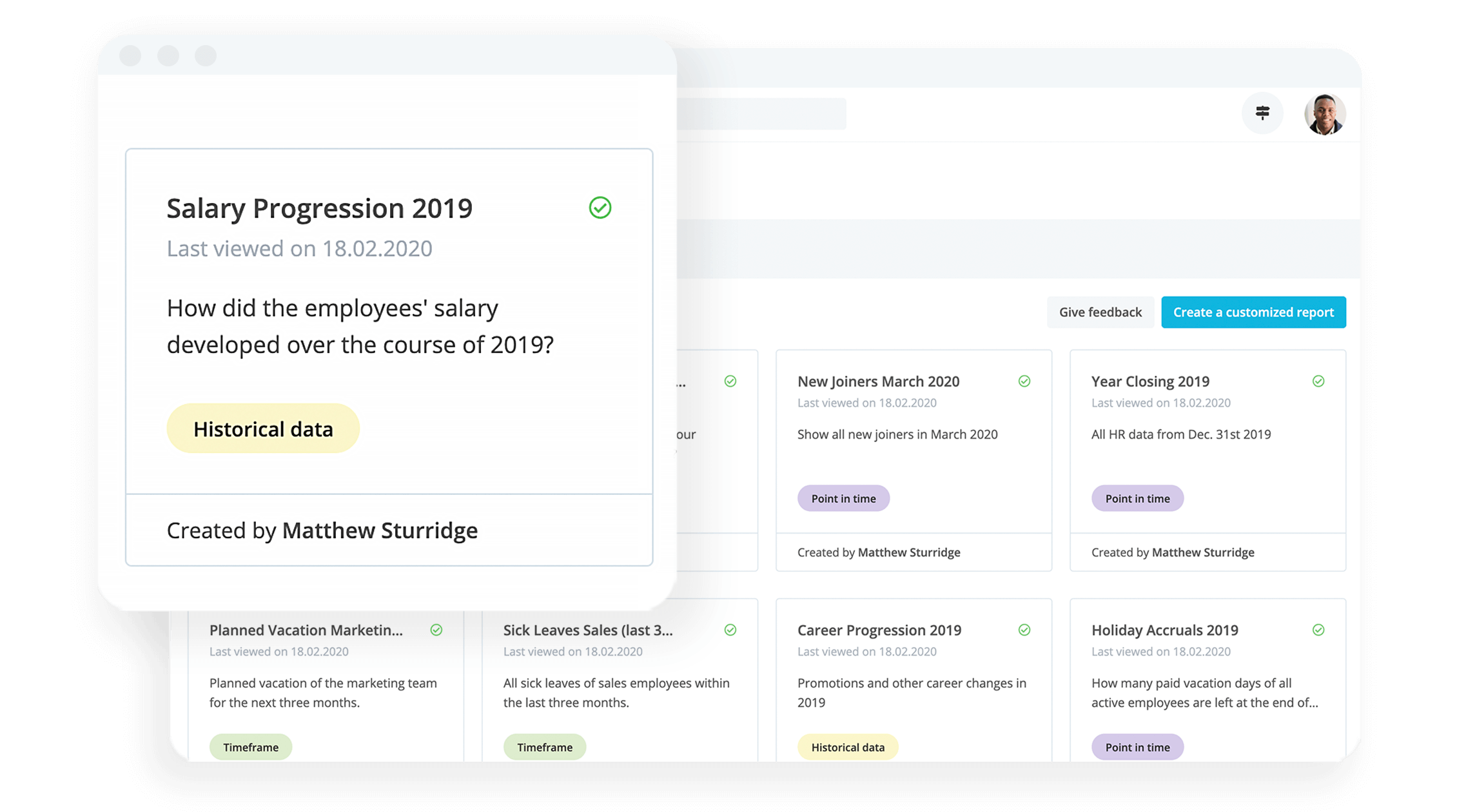
Your analytics team will often deal with large amounts of information that can be hard to interpret in a reasonable timeframe. Personio seeks to shorten the process with its analytics and reporting. This keeps all essential data in one easily accessible place for quick, accurate analysis. Book your free demo and find how Personio can help improve your organisation.
